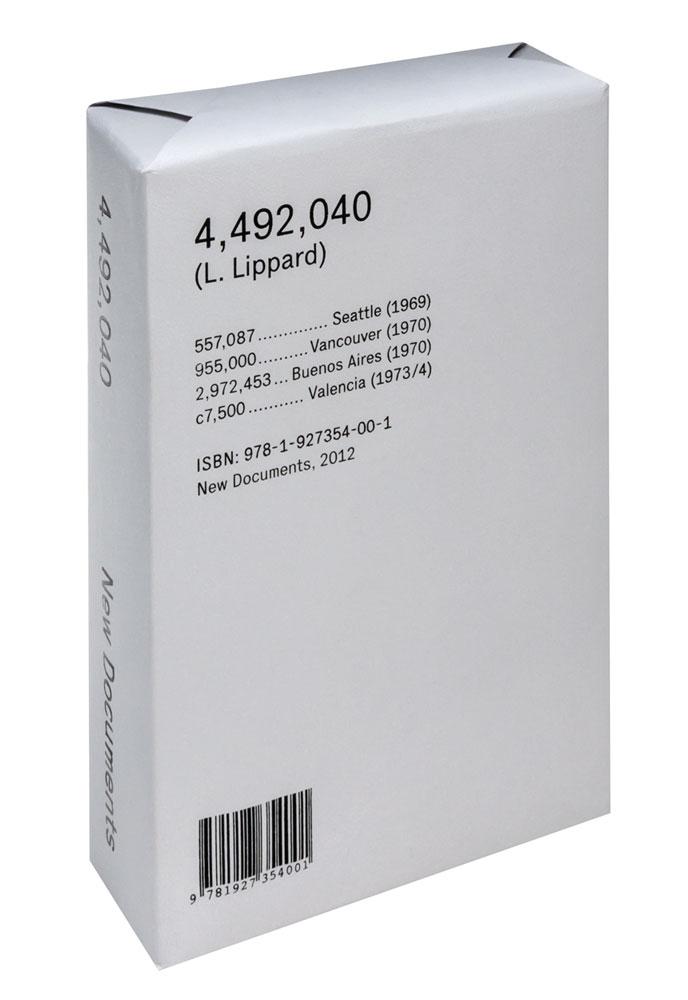Whether at the beach or in the backyard, summer is a super time for reading. Here are our suggestions for what to bring along.
Vitamin D2: New Perspectives in Drawing, Phaidon, 352 pp, $43.85
Phaidon’s Vitamin series has proven a reliable gauge for what’s happening, and what’s next, in contemporary art. This, a second compendium of draughtspeople from around the world (the first was released in 2005), is above all beautiful, as befits the tactility of the medium it represents. (Paragraph breaks are, in this volume, signified by adorable little graphite squiggles.) Canadians are participants, from Art Gallery of Ontario curator Kitty Scott, one of the nominators for the book, to Shuvinai Ashoona and Balint Zsako, whose drawings are handsomely featured.
Luis Jacob: Seeing and Believing, by Marie Fraser, Luis Jacob, David Liss et al., Black Dog Publishing, 192 pp, $18.75
This catalogue represents three recent Luis Jacob exhibitions: “Tableaux Vivants” at Montreal’s Fonderie Darling in 2010; “Pictures at an Exhibition” at MOCCA in Toronto in 2011; and “The Eye, The Hole, The Picture” at Montreal’s McCord Museum that same year. They are significant efforts for Jacob, vitally linked in their considerations of the charge afforded by acts of presentation and viewership. A riveting concluding essay by Jacob himself—which examines these acts through an anarchist lens—is a highlight.
4,492,040, curated by Lucy Lippard, edited by Jeff Khonsary, New Documents, 358 pp, $33.25
The “numbers shows” Lucy Lippard staged from 1969 to 1974—“557,087” in Seattle, “955,000” in Vancouver, “2,972,453” in Buenos Aires and “c7,500” in Valencia—are regularly cited among the most important and innovative exhibitions of their time. Applying the logic of the Conceptual art they contained to the structure of the gallery space, the exhibitions became dematerialized and sprawling, mixing art and life both inside and outside of the white cube. For each show, in lieu of a traditional catalogue, Lippard produced a mutable collection of index cards, which introduced the exhibitions through a series of fragmentary quotations and thoughts before giving way to unmediated proposals, documentation, instructions, supplementary materials and statements provided by the artists involved. 4,492,040 reproduces the more than 200 original cards, simultaneously acting as an important primary document and exuding an immediacy, tactility and precariousness that makes revisiting these experience-oriented artworks an active endeavour.
It’s the Political Economy, Stupid: The Global Financial Crisis in Art and Theory, edited by Gregory Sholette and Oliver Ressler, Pluto Press, 192 pp, $30.95
Philosopher Slavoj Žižek’s wry turn on a Clinton-era campaign slogan provides a critical ground zero for this catalogue-cum-anthology. With essays and projects by a global cast of artists and thinkers—Canadians Liz Park and Melanie Gilligan among them—the book unpacks the paradoxes of dominant neoliberal ideologies (think bailouts versus austerity measures) in the wake of the 2008 financial meltdown, framing the ongoing “catastrophe of capitalism” as a clarion call for a fundamental return to the common good.
The Glory of Byzantium and Early Christendom, by Antony Eastmond, Phaidon, 294 pp, $60.00
Eastmond’s book covers the end of the Roman Empire to the early Renaissance. This era was defined by fierce debate over the nature of images and their link to changing church views over their use. We see the slow return of the naturalism that marked earlier Greek and Roman art, but the emphasis is on the stylized representational modes that saw a fervid 1,000-year investment in the materiality of image-making. The gold-coloured cover and the gilt-edged pages are extensions of a time when images were literally precious.
Marcel Duchamp: The Afternoon Interviews, by Calvin Tomkins, Badlands Unlimited, 93 pp, $11.55
It’s not hard to believe that this previously unpublished series of 1964 conversations between the influential French artist and the longtime New Yorker writer took place in the afternoon—one pictures shadows getting longer and tea being steeped as the two men blithely yet incisively reflect on topics ranging from the Cartesianism of chess to the idea that “art is a habit-forming drug.” The slim book also serves as a snapshot of a shifting New York scene: Duchamp discusses the proliferation of art-making and the increasing commercialization of art, all the while demonstrating an absence of ego refreshingly at odds with his art-icon status.
Luc Tuymans: Exhibitions at David Zwirner, 1994–2012, edited by Donna Wingate and Tommy Simoens, Ludion Press, 240 pp, $46.50
This image-heavy volume tracks Belgian painter Luc Tuymans’s relationship with his New York dealer, David Zwirner, beginning with a conversation between the two that charts Zwirner’s early-90s courtship of the artist through to the present, with 10 solo exhibitions along the way. The book briefly introduces each show and reproduces all artworks, many of which, first shown at Zwirner’s gallery, focus on issues of American security and idealism.
The original version of this article appears in the Summer 2013 issue of Canadian Art, available now on newsstands and digitally via Zinio. To find out what else is in this issue, please view its table of contents.









